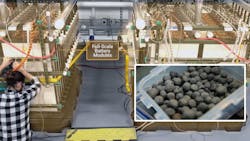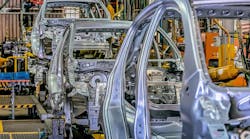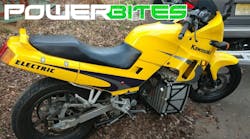Iron-Air Storage Battery Production Begins on Former WV Steel-Mill Site
What you’ll learn:
- Composed entirely of commonly available materials, low-cost iron-air cells are now being manufactured in a West Virginia-based factory
- Thanks to a much lower cost per kWH than any other battery technology, they can be used to provide cost-effective power to supplement wind and solar farms.
- Iron-air technologies eliminate the need for more costly and strategically sensitive imported materials
Form Energy’s American-made utility-scale, iron-air battery storage systems hold the potential to change the economics of renewable energy and smart grids, entering trial production in January 2025. Based on safe, ultra-low-cost materials and manufactured on the site of an abandoned West Virginia steel plant, the modular power storage systems can provide reliable, long-duration (100+ hours) power to supplement wind and solar for a fraction of the cost of conventional lithium-based batteries.
The air-iron battery cells use a low-cost, porous form of iron known as “direct-reduced iron” that’s already produced in high volumes as a raw material for the steel industry. Its natural porosity allows for it to absorb the non-flammable electrolyte, which consists of dissolved salts. Once saturated, the porous electrode forms a large, active surface area for an oxidation reaction that can deliver a steady stream of electrons for up to 100 hours.
The cell’s chemistry permits the reaction to be completely reversed during charging. Although Form Energy declined to provide details, it’s likely that the cell can support many thousands of charge-discharge cycles (details to follow in an extended feature article later this year).
In addition to offering the lowest cost per kWH of any storage technology to date, Form Energy’s cells are extremely safe, eliminating the potential for fires or explosions found in most lithium-based cells. Equally important, iron-air cells are manufactured using common, low-cost materials that are readily available throughout North America and Europe. This eliminates the company’s dependence on imported strategic materials and their higher transport costs.
The production cells measure roughly a meter tall and are usually assembled into modules, containing roughly 30 cells. They’re about the size of a side-by-side washer/dryer set. Groups of modules can then be assembled and placed into rugged transport containers that can be shipped and then wired directly into other containers to form modular, megawatt-scale power blocks.
Facts About Form’s Facility
Located in Weirton, West Virginia, Form Energy’s 550,000 ft.2 manufacturing plant was built in only a bit more than a year on the site of the former Weirton Steel mill, which shuttered in 2023. Currently employing over 300 people, Form Factory 1 has begun new construction that’s expected to expand its annual production capacity to 500 MW and provide employment for at least 750 workers by 2028.
As production ramps up, the storage systems it produces will be shipped and deployed to fulfill the orders it has with several leading utilities for multi-day energy-storage projects across the United States. This includes a Maine-based storage facility with around 2,000 modules. It’s capable of storing 8,500 MWh, or roughly enough power for around 70,000 homes for 100 hours, making it the largest battery storage facility to date.
Learn more at FormEnergy.com.
Next in This Issue of PowerBites
More PowerBites
About the Author
Lee Goldberg
Contributing Editor
Lee Goldberg is a self-identified “Recovering Engineer,” Maker/Hacker, Green-Tech Maven, Aviator, Gadfly, and Geek Dad. He spent the first 18 years of his career helping design microprocessors, embedded systems, renewable energy applications, and the occasional interplanetary spacecraft. After trading his ‘scope and soldering iron for a keyboard and a second career as a tech journalist, he’s spent the next two decades at several print and online engineering publications.
Lee’s current focus is power electronics, especially the technologies involved with energy efficiency, energy management, and renewable energy. This dovetails with his coverage of sustainable technologies and various environmental and social issues within the engineering community that he began in 1996. Lee also covers 3D printers, open-source hardware, and other Maker/Hacker technologies.
Lee holds a BSEE in Electrical Engineering from Thomas Edison College, and participated in a colloquium on technology, society, and the environment at Goddard College’s Institute for Social Ecology. His book, “Green Electronics/Green Bottom Line - A Commonsense Guide To Environmentally Responsible Engineering and Management,” was published by Newnes Press.
Lee, his wife Catherine, and his daughter Anwyn currently reside in the outskirts of Princeton N.J., where they masquerade as a typical suburban family.
Lee also writes the regular PowerBites series.





